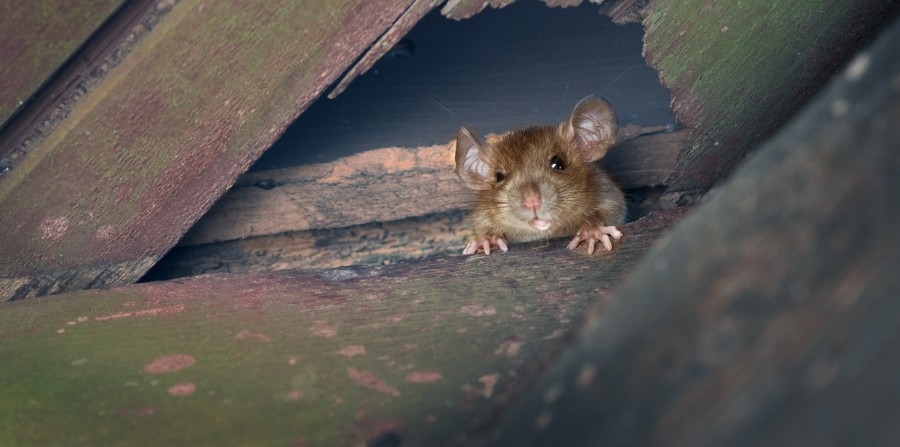If it seems like there’s an increase in insects in and around your home in the fall, you’re probably right. It’s the result of pests trying to get indoors as the weather gets colder. Some pests migrate to warmer climates, some burrow in or under debris, while others just try to get into our homes to warm up. The scientific term for this phenomenon is overwintering. Pests will find a suitable area to settle in during the colder months and then become more active in the spring.
This most directly affects you when fall pests enter your home. Some do this by coming in through small openings that are already present and others will chew their way in. There are several types of pests known to try to get in, from insects to rodents. The most difficult fall pests to get rid of are the ones you can’t see because they get in the attic or behind your walls. Read on to learn more about the common pests that may try to get in your home in the fall.
Rodents
You probably know that squirrels are excellent climbers but did you know that roof rats and mice can also climb well? Most rodents will climb almost anything; branches, fences and drainpipes can all be used to access the roof of your home! From there, it’s easy to get into your attic and make a nest to stay warm for the fall and winter. If you hear scratching or gnawing noises from up above or inside the walls, you likely have rodents inside your attic or wall voids starting to make themselves at home. Should this happen, it would be time to call an experienced rodent exterminator like the specialists at Griffin Pest Solutions. It is also advised that you ensure your home is properly sealed to help prevent rodent entry. A mouse can enter an opening roughly the size of a dime! Squirrels will chew on dormers and fascia boards to make their own entry points.
Asian lady beetles
While Asian lady beetles resemble ladybugs, they’re somewhat larger. Their coloration ranges from red to orange and not all of them have spots. So, what’s the problem with these small ladybug look-alikes? They hang out together in large groups, using pheromones to communicate their location. When they decide to enter your home to get warm, the result can be a large infestation that ends up in your attic or walls. While they won’t directly cause harm by damaging your home or stinging you, there are unpleasant side effects. Should you end up with an infestation, lady beetle waste can stain and is known for triggering allergic reactions or breathing difficulties in sensitive individuals.
The best way to prevent these, or any bugs, from getting into your home is to seal cracks and crevices on the exterior of your home. Asian lady beetles are small, so you’ll need to be diligent should you choose to take on this task. Having a preventative pest control service in place can also help to prevent a pest infestation from taking place in your home. If a product is applied to your home consistently, it doesn’t allow for an infestation to even begin.
Stink bugs
While there are several types of stink bugs, the brown marmorated stink bug is the one you’re most likely to see in your home. It’s an invasive species originally from Asia. They’re shaped like a shield and their color is a mottled combination of brown and gray. They range in size from ¼” to ⅜”. As their name suggests, when stink bugs feel threatened or get squashed, they release an unpleasant odor. Stink bugs tend to spend the winter in quiet parts of a home where they’re unlikely to be disturbed like an attic, crawlspace or inside the walls.
When you see these pests walking on your home or nearby trees, it is easy to forget that they can fly and it’s their wings that bring them to your home in swarms at times. You will first start to notice these fall pests as the temperature starts to cool at night but the days are still warm. Stink bugs will land on the sides of your home, where the sun is warming the siding, this helps them to stay warm as well. They are drawn to lighter-colored homes, which can be the reason you are seeing them but your neighbor doesn’t have any issues.
Wasps
A whole wasp colony doesn’t overwinter, just the queens. The worker wasps won’t survive the winter and the queen will start a new colony every year. The fertilized queens overwinter outdoors in places such as hollow logs, stumps or under leaves. However, they can also overwinter on or in structures, including the attics or siding of homes. The most common way for wasps to get in is through attic vents that aren’t screened. If you haven’t done so lately, look for openings into your attic and seal them as much as possible to help prevent wasps and other pests from entering. It is possible for the queen to start her new colony in your attic, which can mean a large nest of wasps could end up inside!
Expert Exterminators
Griffin Pest Solutions has been providing the Lower Peninsula of Michigan with trusted pest control services since 1929. If you have any of these pests are in your home, we can help get them out and keep them out. We also offer preventative services to help keep these pests from entering your home this fall or winter! Call us for a free quote!

